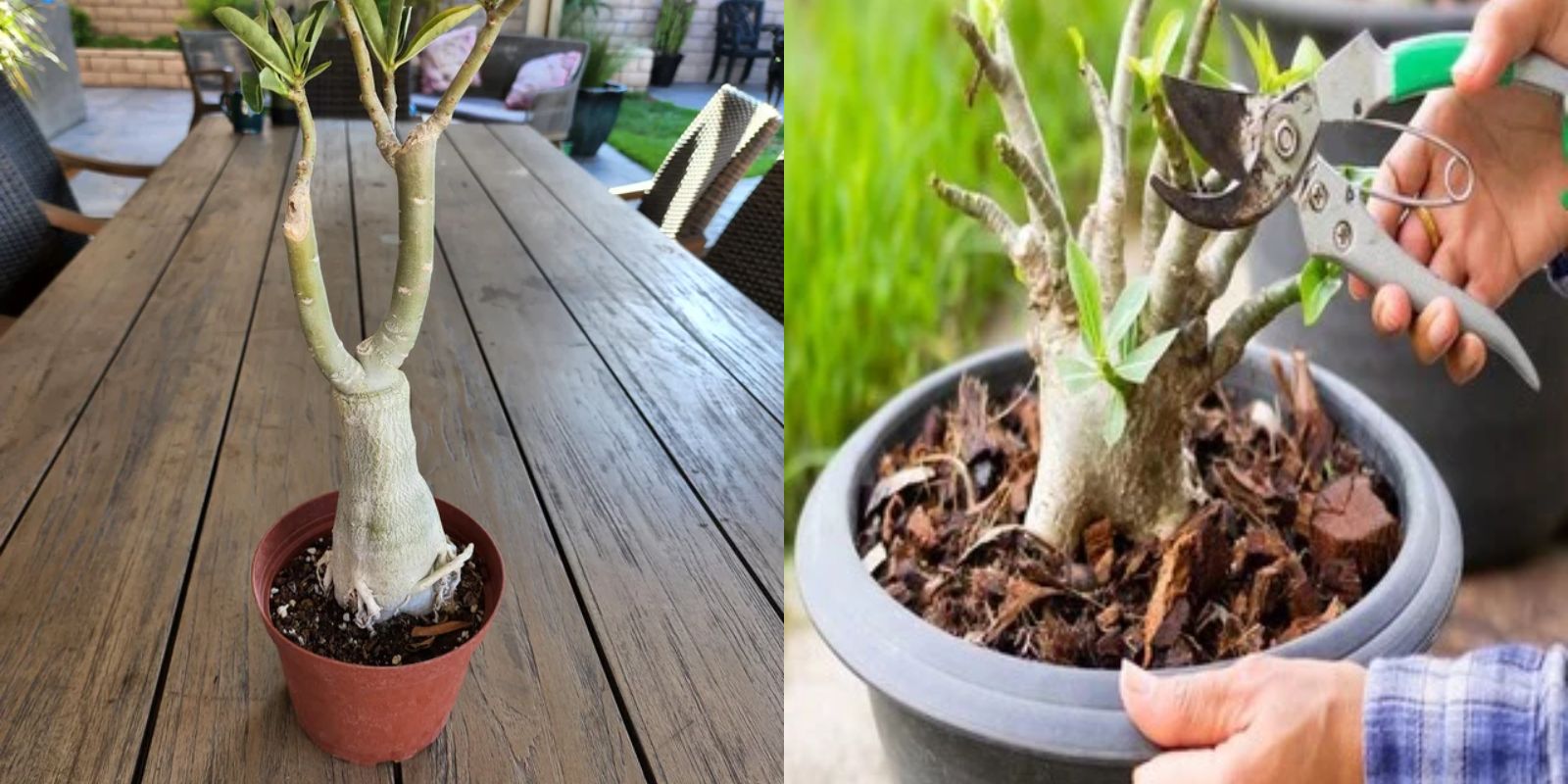Mastering the Art of Pruning Adenium Plants: A Step-by-Step Guide for Thriving Growth
Adenium plants, commonly known as Desert Roses, are cherished for their captivating blooms, sculptural appearance, and bonsai-like structure. To keep these unique plants healthy, beautiful, and blooming abundantly, proper pruning is essential. Whether you’re an experienced gardener or just beginning your journey, this guide will walk you through the when, why, and how of pruning Adenium plants.
Why Should You Prune Your Adenium?
Pruning is not just about aesthetics; it plays a vital role in the health and vitality of your Adenium. Here are some reasons why pruning is crucial:
- Encourages New Growth: Pruning stimulates the growth of new branches and flowers, leading to a fuller, more vibrant plant.
- Prevents Disease: Removing dead or diseased parts reduces the risk of infections and pest infestations.
- Shapes the Plant: Pruning helps maintain the compact, bonsai-like structure Adeniums are famous for.
- Increases Airflow: Thinning out overcrowded branches improves airflow, reducing humidity around the plant and preventing fungal issues.
When to Prune Adenium Plants
Timing is everything when it comes to pruning Adenium. The ideal time to prune is during late winter or early spring, just before the plant enters its active growth phase.
- Why this timing? Pruning during dormancy minimizes stress on the plant, allowing it to recover quickly and focus on producing fresh growth when the growing season begins.
- Avoid pruning in late fall or winter when the plant is dormant and its energy reserves are low.
How to Prune Adenium Plants: Step-by-Step Guide
1. Gather Your Tools
Before you start, ensure you have the right tools:
- Sharp pruning shears or scissors
- Rubbing alcohol or a sterilizing solution
- Pruning seal or cinnamon powder (optional)
2. Prepare Your Plant
- Inspect your Adenium for dead, diseased, or overcrowded branches.
- Decide on the shape you want to achieve.
3. Sterilize Your Tools
Dip your pruning shears in rubbing alcohol to prevent transferring diseases to your plant.
4. Remove Dead or Diseased Parts
Start by cutting off any branches that are dry, blackened, or show signs of rot. These can drain the plant’s energy and spread disease.
5. Shape the Plant
- Trim overgrown branches to maintain balance.
- Make clean cuts just above a leaf node to encourage branching.
- Focus on creating a harmonious shape that enhances the plant’s natural beauty.
6. Thin Out Crowded Areas
If branches are growing too closely together, remove a few to improve airflow and allow sunlight to penetrate the canopy.
7. Limit the Extent of Pruning
Avoid removing more than one-third of the plant at a time. Over-pruning can stress the plant and delay recovery.
8. Seal Larger Cuts
For larger branches, apply pruning seal or cinnamon powder to the cuts to protect them from pests and infections.
9. Post-Pruning Care
- Place the plant in a bright, sunny location.
- Reduce watering temporarily to allow the plant to recover.
- Avoid fertilizing for a few weeks after pruning.
Common Pruning Mistakes to Avoid
- Pruning at the Wrong Time: Avoid pruning during the blooming phase or late fall.
- Using Dull Tools: Dull tools can damage the plant, leading to jagged cuts and slower healing.
- Over-Pruning: Removing too many branches can shock the plant, affecting growth and flowering.
- Ignoring Sterilization: Using dirty tools increases the risk of infections.
- Neglecting Post-Pruning Care: Proper aftercare is essential for a healthy recovery.
Benefits of Regular Pruning
When done correctly, pruning rewards your Adenium with:
- A healthier root system that supports more blooms.
- A bushier, well-shaped plant that becomes a focal point in your garden.
- Increased flowering, as pruning encourages the plant to redirect energy toward blooming.
How to Style Your Adenium Through Pruning
Adenium plants offer endless possibilities for styling. You can prune them to achieve:
- A Compact Bonsai Look: Remove lower branches and shape the canopy for a tree-like appearance.
- A Bushy Plant: Focus on trimming the tips of branches to encourage dense growth.
- Unique Sculptures: Experiment with asymmetrical shapes for an artistic touch.
Frequently Asked Questions
Q: Can I prune my Adenium in summer?
A: While it’s best to prune during late winter or early spring, light pruning can be done in summer to remove specific branches or encourage additional growth.
Q: How often should I prune my Adenium?
A: Prune your Adenium once a year to maintain its shape and health. Additional light pruning can be done as needed.
Q: My Adenium isn’t flowering after pruning. What should I do?
A: Ensure the plant receives plenty of sunlight, and avoid overwatering. Once it recovers, it will bloom in its growing season.
In Conclusion
Pruning Adenium plants is an art that combines patience, care, and a vision for beauty. By following these steps, you can transform your Adenium into a thriving masterpiece, rewarding you with stunning blooms and a striking appearance.
💬 Share your pruning success stories or ask questions in the comments below! Let’s grow together!
#DesertRoseCare #AdeniumLovers #PruningTips #GardeningGoals #PlantCareHacks #GardenersLife

